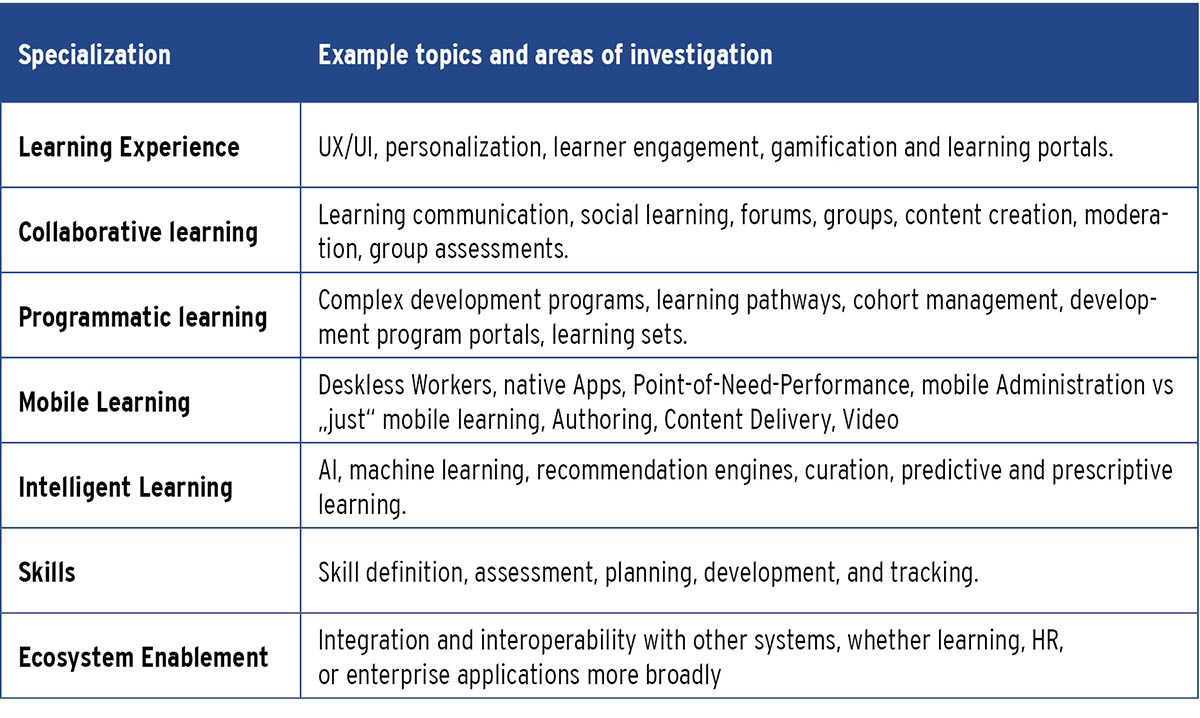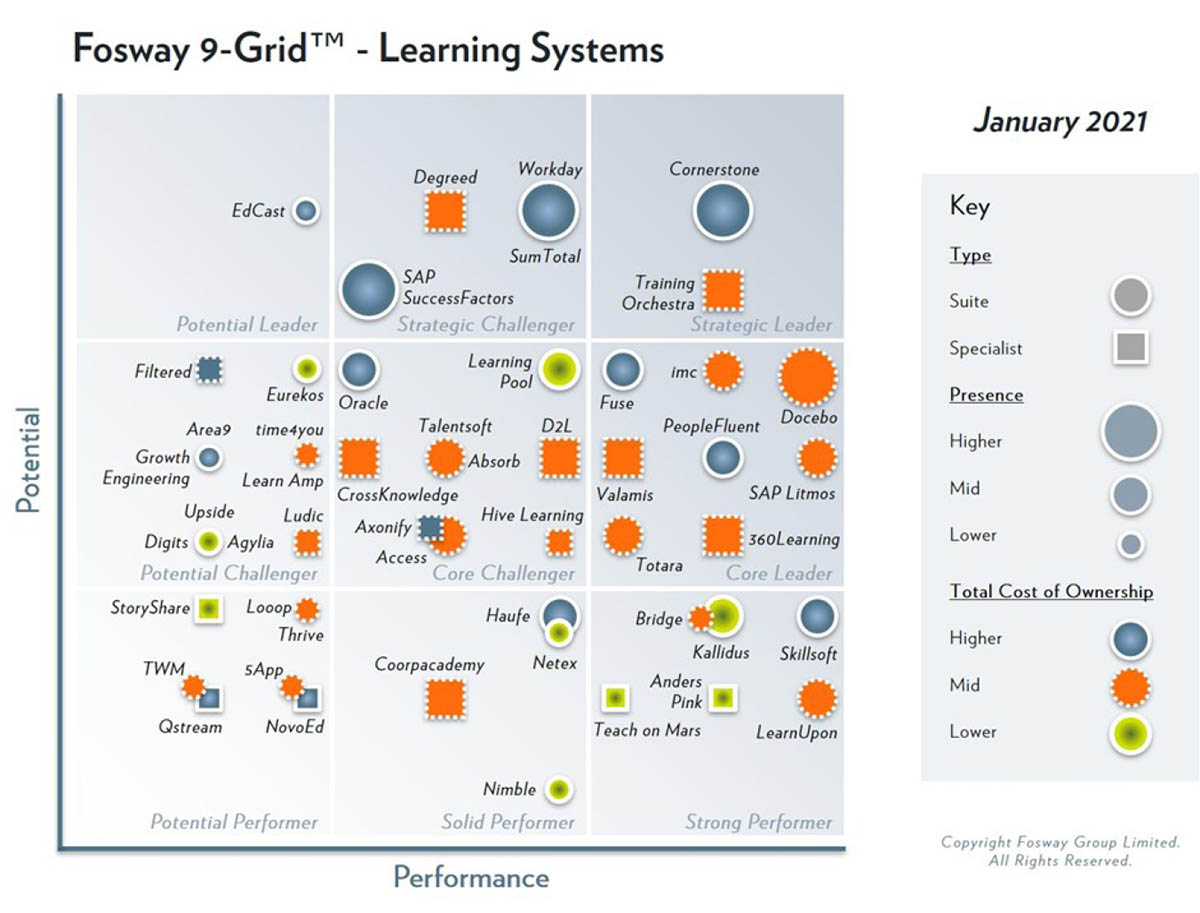What are polar bears, polar cod and krill doing in the desert?!
 The world of digital learning has always been full of colourful buzzwords. Since the days of computer-based training, new terms like rapid eLearning, social learning, informal learning, or microlearning keep emerging. It almost seems as if we are adding new buzz words (mostly Anglicism) to new trends to support what is currently occupying corporate training. Of course, even analysts are not immune to this. At Fosway, however, we always strive to cut through the hype. But sometimes, even we catch ourselves using the relevant jargon.
The world of digital learning has always been full of colourful buzzwords. Since the days of computer-based training, new terms like rapid eLearning, social learning, informal learning, or microlearning keep emerging. It almost seems as if we are adding new buzz words (mostly Anglicism) to new trends to support what is currently occupying corporate training. Of course, even analysts are not immune to this. At Fosway, however, we always strive to cut through the hype. But sometimes, even we catch ourselves using the relevant jargon.
Learning Ecosystem is perhaps one such term. It is a topic we have actually been talking about for 25 years, and it has become increasingly important in the last 12 months. But what do we really mean by it?
The “original” definition of ecosystem, of course, derives from biology: a biological community of interacting organisms and their physical environment. But it’s a term that has long been used in the IT industry as well – for example, to refer to a complex network (community) of interconnected IT systems (organisms) in a corporate environment. There are further parallels to biology: some of the IT systems complement each other well, i.e. working together almost symbiotically, while others are more in a cut-throat competition and resembling predators. Anyone who has ever had to pay the bill of an implementation house that had to integrate two “predator systems” with one another, will understand the meaning of this. The IT ecosystem acknowledges integration relationships between the individual IT systems – they are supposed to act and cooperate with each other.
However, it also depends heavily on the corporate context in which the systems are used. Is it a pan-European retailer where the employees need to learn in many languages on their mobile devices, or is it a small manufacturing company that produces in just one country and distributes its goods through wholesalers? The systems that work well in one corporate context may be only moderately suitable in another. This can be as difficult as relocating krill, fish, penguins, and leopard seals in the mountains, or krill, polar cod, seals, and polar bears in the desert.
Building a digital learning ecosystem is not as easy as it seems….
So how can the idea of IT ecosystems be applied to corporate learning? Well, digital learning has always had its own ecosystem under the umbrella of the HR biosphere. Learning management systems (LMS), learning experience platforms (LXPs), authoring tools, performance support platforms, collaboration tools…. the list of technology options for L&D is almost endless. But the world seems littered with organizations that have made poor choices about their learning technologies, especially when it comes to effectively dovetailing unequal IT systems. Nearly 70% of organizations believe their learning systems are not fit for the modern workforce, and only 50% of enterprise buyers rate the quality of their learning systems as good or better. Clearly, something is not right.
To help organizations build a well-functioning learning ecosystem, we first need to identify the pieces and figure out the various key elements needed to make it happen. For many years, the LMS was considered the centerpiece.
A modern learning experience and a simple architecture – the fallacy of separating LMS and LXP.
Today, classroom and compliance training are certainly not new or even exciting areas of corporate training. But they are important and necessary, and organizations must continue to implement them regardless of new digital trends. At the same time, however, individuals in organizations naturally prefer to engage with new ideas, concepts, and opportunities to create more modern learning experiences – around current trends such as collaboration, mobile, artificial intelligence (AI), or curation.
The LMS acronym has long been the go-to word at learning technology conferences. When buyers of learning systems start thinking about evolving their systems landscape, is typically where the Learning Experience Platform (LXP) comes into the conversation these days. The number of vendors using the LXP label to appeal to modern buyers put off by poor LMS experiences has literally exploded. In doing so, LXPs are combining disruptive (and often new) ideas and methods of delivering learning content – mobile, social, video-based, adaptive, curation – the list keeps growing. But whatever they may be, LXPs do not represent a standalone buying category. Therefore, we need more accurate and better-fitting terms to describe LXPs, and a better model to analyze their impact and differences. So instead of using the marketing terms of LMS and LXP, Fosway has chosen to classify all learning systems as either suites or specialists.
Learning System Suites are platforms that support and connect a wide range of traditional and modern next-generation learning approaches. Their goal is to cover all core areas of corporate learning, including traditional learning management, an enhanced learning experience, and serving old and new learning channels equally. So, on the one hand, suites are the next evolution of classic learning management systems (LMS), enhanced with next-generation learning functionalities and improved in learner experience. But on the other hand, they are also the evolution of modern LXPs, enhanced with classic learning management system functionality. Thus, suites are a “one-stop store” solution for modern learning.
Learning System Specialists are the counterpart to this. They blatantly focus on a single functional area with a disruptive agenda. Whether it’s being the best provider in mobile learning or delivering learning content adaptive to individual learning progress and knowledge levels through artificial intelligence support, or creating a unified learning experience for content from a wide variety of sources. These specialists offer a focused value proposition and claim to be leaders in their area of expertise. Specialists will rarely be the only learning system in an organization. They do not cover all the areas that an organization needs to support, plan and manage in regards to the training and learning of their employees. Instead, the goal of the specialists is to be disruptive to the suites, as well as to provide a significantly higher value proposition in a single discipline of modern training.
While it is usually easier for large companies with complex structures to introduce an additional specialized solution to improve a particular aspect of learning, all other buyers prefer a single system that does as much as possible – a suite. By no means is the term “prefer” emphatic enough here: mid-sized organizations simply do not have the resources or budgets to effectively manage and integrate multiple learning systems. It is too difficult and too expensive. In truth, of course, large enterprises do not really want this either. However, it is far too difficult to fix the enterprise-wide LMS so that learning can take place at the required scale, while still implementing all the innovations in parallel, and also transform the learning experience at the same time. Supertankers are very slow to turn around. So the idea of separate layers for Learning Management and Learning Experience may sound good in theory, but it is difficult for customers to put into practice and maintain.
So instead, we talk fondly of learning system specialists. Here we have identified seven areas that we have been looking at in-depth in 2020.
Our goal is to highlight what the learning systems‘ buyers need to know about these different specialties; what area is at its core and why it is important to the future of corporate learning; and what you need to consider from a business perspective. Different vendors may approach the same specialty area in different ways, and they all potentially impact how that solution connects with the other solutions your organization already has in place, i.e., how the specialty solution fits into your learning ecosystem.
And while the idea of separate specialty areas for different aspects of learning management and the learning experience sounds good at first, it can be problematic for organizations to implement, operate and maintain them in an ecosystem within their enterprise context. Vendors will tell you that their systems can be integrated with other “out-of-the-box,”- systems, but the reality is not always that simple.

Putting the ecosystem puzzle back together
Now that we have deconstructed the various specialties of learning, the final piece of the ecosystem puzzle is for us to put it all back together and look at Learning Systems as an ecosystem and not merely as a single system. Of course, that has always been the case. Even in the old days of the LMS, learning technology was always about much more than learning management. There were content tools, assessments, virtual classrooms, learning evaluation, and so on. In the world of modern learning, this has become even more complex, both because of the diversity of digital learning and the different contexts in which it operates. Disruptive specializations have further highlighted this, and as a result of COVID-19, a digital offering is currently the only viable path for much of the learning needs in any case.
No matter what the size and maturity of your organization, learning will never be about just one system, it will always be about an ecosystem. As learning becomes more complex and diverse, the ecosystem becomes more important, as does the ability of learning suites and specialists to function effectively in a broader ecosystem – in the context of learning, HR and talent management, and the broader business applications of an organization. We realized that the ability of learning systems to function effectively within a broader ecosystem (their “ecosystem enablement,” as we now call it) is now so essential that it has become a disruptive force in its own right.
Take the time to consider the various specialties we have laid out above, and consider how your current or potential future systems support them. The table in the Fosway 9-Grid™ for Learning Systems 2021 breaks down which solutions are suites and which fall into the various specialist categories.
So, for example, if you want to curate more learning content, but your current learning system does not offer that feature, look at how a specialist could fill that gap. Do not do this in isolation but think about the ecosystem and how you could combine your different learning solutions to create something that works together – and has an impact that is even greater than the sum of its parts.
Always keep in mind the context of your organization in which this ecosystem exists. Consider what other solutions the specialty system will need to interact with, and if you are looking to bring in a vendor that covers multiple specialties, also consider if it overlaps with other systems and if other systems could be replaced.
As Fosway, we will be releasing more findings from our ecosystem study in the following months and hope that these findings will guide your thinking about the design of your future learning ecosystem so that it ultimately transforms and evolves your learning activities and creates transformative outcomes for your learners and your organization.
Contact:
Dr. Sven Elbert
Fosway Group
+44 (0) 207 / 917 18 70





